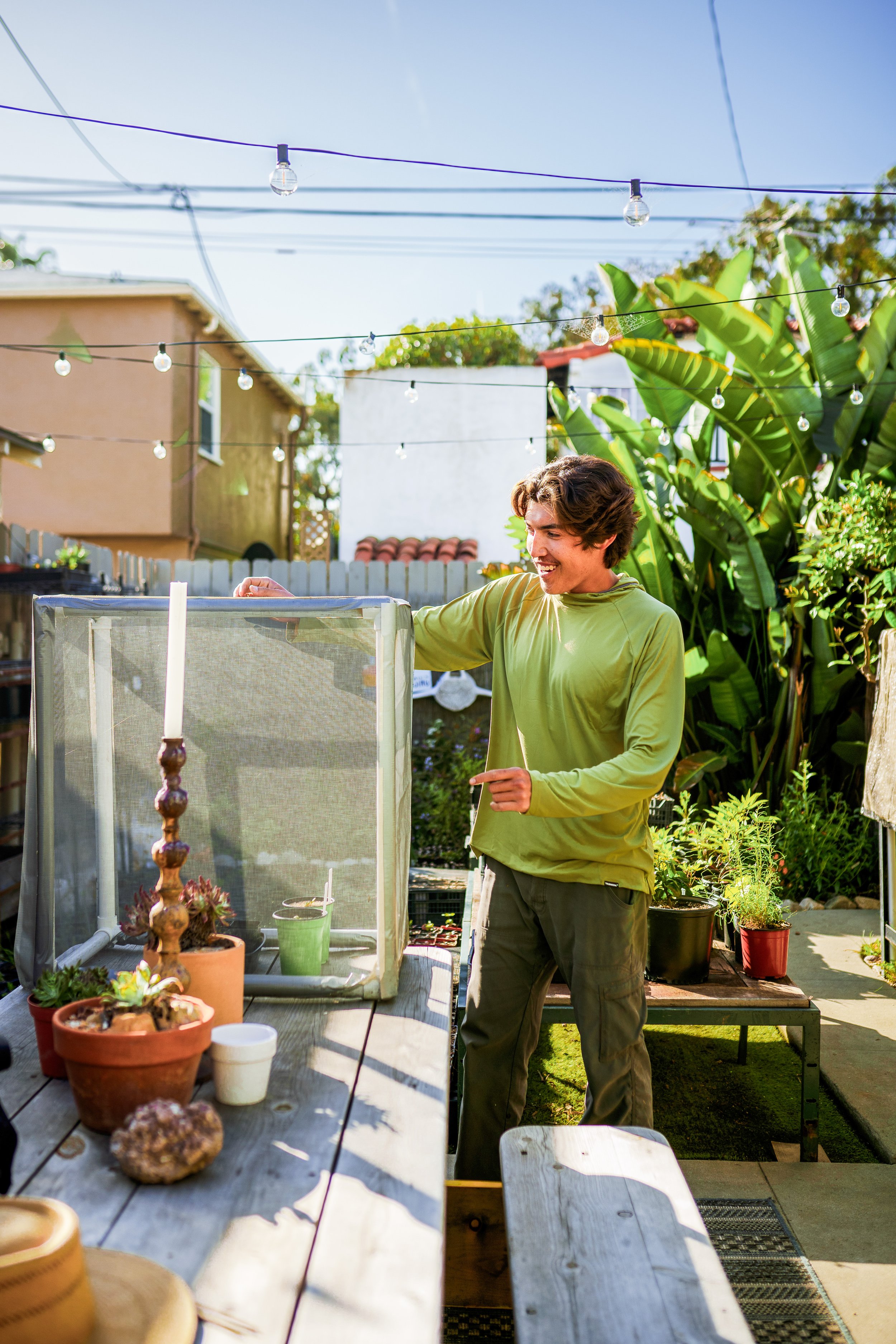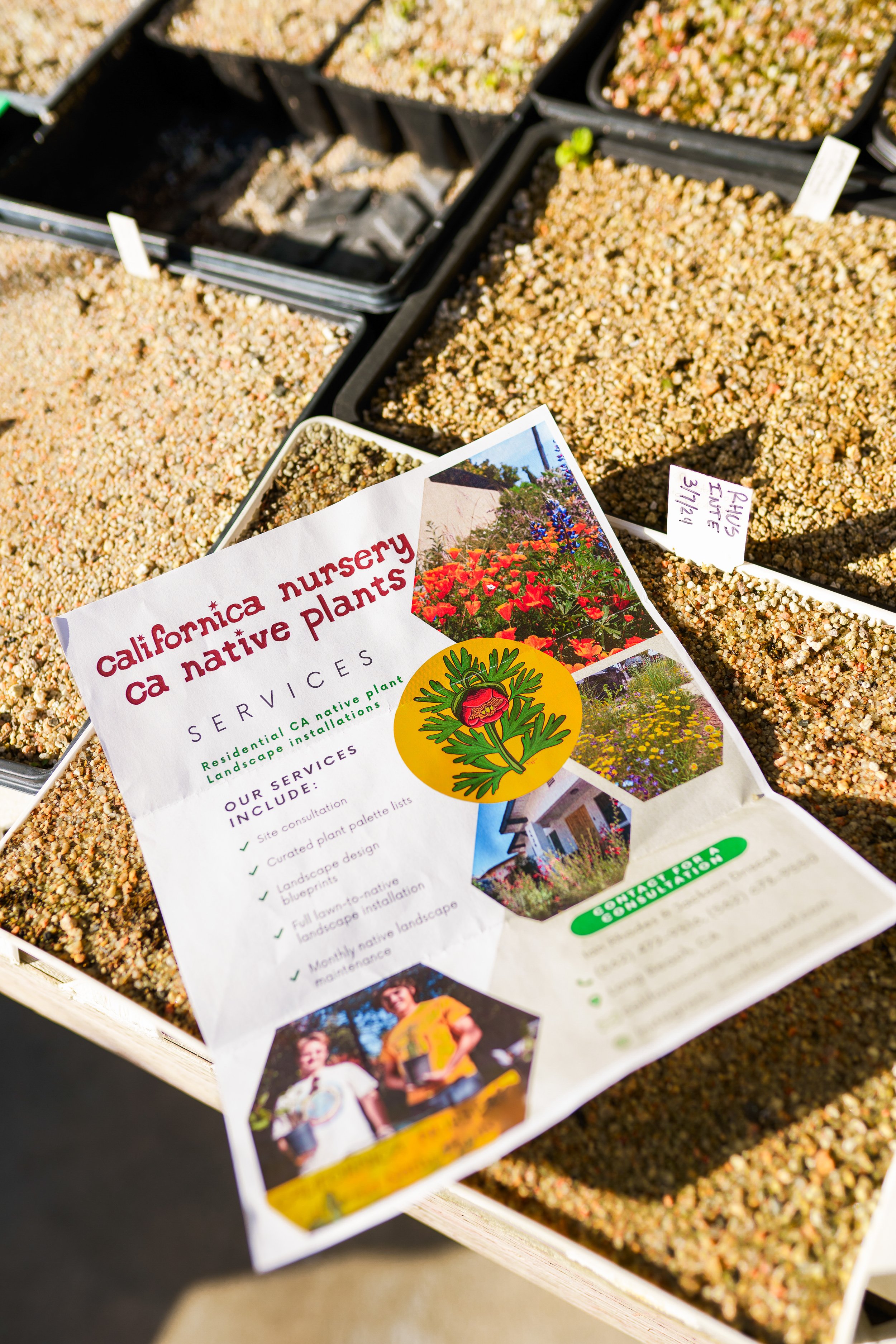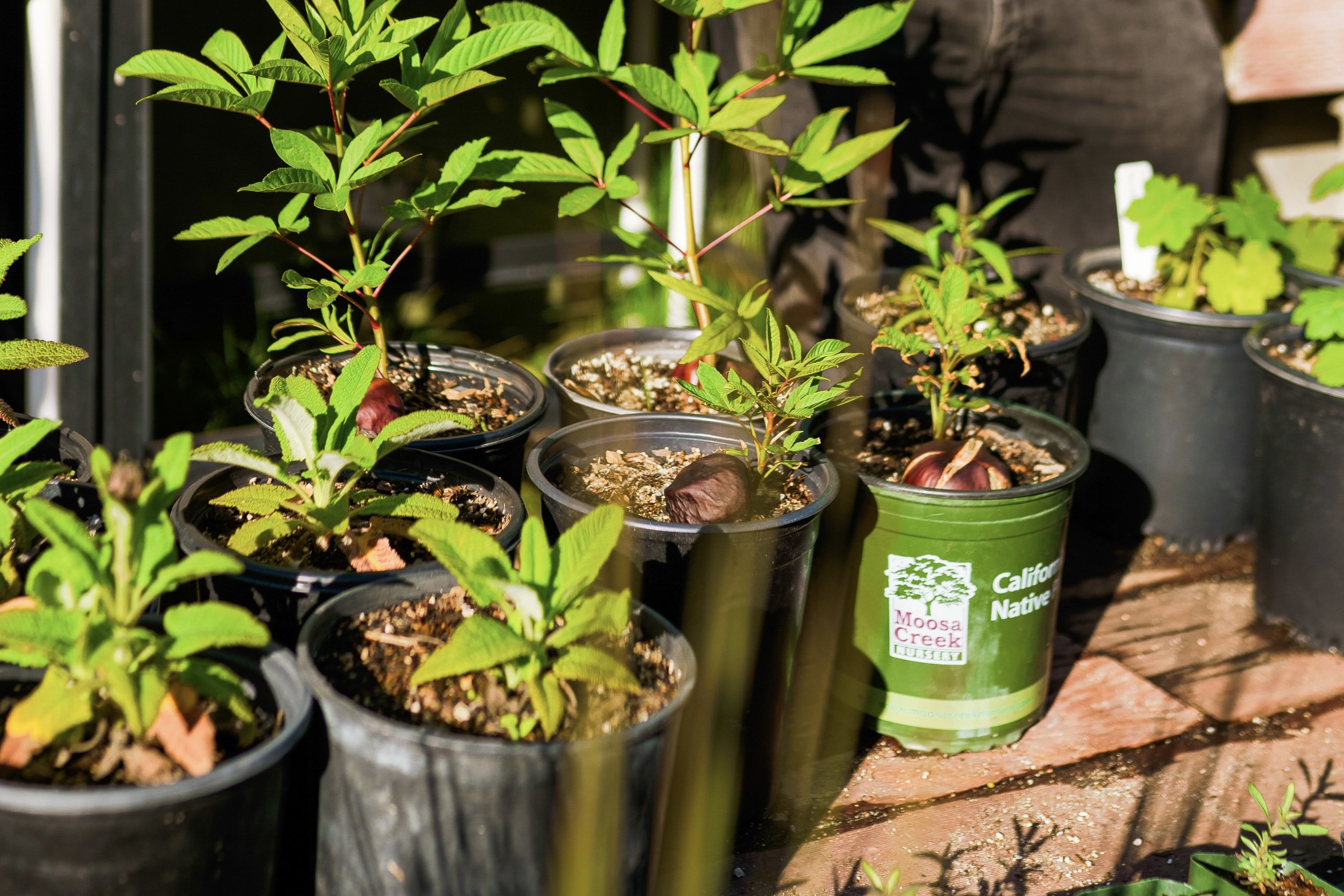Californica Dreaming
Ian Rhodes’ and Jackson Driscoll's fascination with nature began in elementary school. Rhodes remembers catching lizards to the dismay of his freaked-out classmates, while Driscoll much preferred his science classes to math or English.
Driscoll went on to study natural resource management at Oregon State University, while Rhodes majored in environmental studies and economics at UC Santa Cruz. Now, the two are co-owners of Californica Nursery, a Long Beach-based California native plants nursery.
The friends’ passion project turned successful business wasn’t born until the two returned to Long Beach after college during the height of the COVID-19 pandemic. Excited to apply what they had learned during their undergraduate education to their hometown, Driscoll and Rhodes had begun growing native species in their respective backyards. As their spaces overflowed with fauna, they decided to become a source for other plant enthusiasts to get native plants.
Ian Rhodes and Jackson Driscoll grow a variety of native plant species right in their backyard. Photo by Olivia Peay
While Driscoll and Rhodes had some initial reservations about how their friendship might be impacted by starting a business together, it in turn became one of their greatest strengths. Being comfortable and communicative with one another, as well as moving in together, has made their business run smoothly.
“Putting a label of ‘business’ on it doesn't change anything, it’s just fun to do,” Driscoll said. “It’s a blend of working hard and just joking around always.”
The plants that make up Californica Nursery begin in Rhode’s and Driscolls' shared backyard. The pair does their best to source seeds locally and ethically, which they typically plant in the fall so they can grow naturally during the rainy season. Once the plants outgrow a one-gallon pot size, they are moved to a space given to Rhodes and Driscoll by the Growing Experience – an urban farm and community garden in North Long Beach.
“This isn't a permanent spot by any means, but it’s super excellent for us to have because every year we'd max out on space in our backyard,” Rhodes said.
Ian Rhodes holds a young plant. Photo by Olivia Peay
Native sages, buck weeds and showy flowers are just some of the beginner-friendly plants Californica Nursery offers. While Driscoll is drawn to planting these more common types of plants, Rhodes said he enjoys planting more “oddball stuff.”
“I try to push people onto the uncommon stuff sometimes just to diversify native yards,” Rhodes said. “Often, even in native landscaping, you'll see the same suite of plants.”
“Californica” is the species name for different California native plants—like Californica Buckeye or Artemisia Californica; this focus on hyper locality stems from Driscoll and Rhodes's background in plant conservation and restoration.
“We love when we plant plants and we see wildlife using them like butterflies, bees and all sorts of insects, small mammals, birds; it's so obvious when you look at a very manicured non-native landscape versus a native landscape,” Driscoll said.


Native plants are natural to the area where they are found and have evolved for millions of years to be there. They are a crucial part of the ecosystem and provide food and shelter for the ecosystem's inhabitants. Non-native plants have not historically been a part of the area they are in, and instead have been introduced by humans. They don’t provide food and shelter to the local wildlife.
Rhodes added that they “try to keep it as local as possible for the purpose of genetics and just the benefit for wildlife.”
Rhodes and Driscoll don’t just sell plants – they also offer landscaping services and their general expertise. Rhodes said people often have misconceptions about what native plants are, reducing them to “weeds” when, in reality, their impact includes increasing wildlife and drought tolerance. Rhodes enjoys talking to people about the importance of native plants at different community events.
There is also a conversation around aesthetics that often discourages folks from investing in native plants. Rhodes said people often ask, ‘Does it have flowers?’ when looking at Californica Nursery plants, which exemplifies the disconnect that exists between people and nature/plants.
At California Nursery, every day is Earth Day. Photo by Olivia Peay
“It's purely visual for most people, which is the obstacle to get people on board with plants and especially native plants, like seeing the values beyond just how it looks, which is like the age-old reason non-native [plants] exist here,” Driscoll said. “[However] people usually leave our conversations feeling kind of refreshed or like stoked on native plants.”
Tabling events have been one of the indicators of Californica Nursery’s growth. They began tabling a few years back, and while in the beginning it involved them reaching out to events to see if they could table, their popularity has grown to the point that people have started reaching out to them first. At its core, Californica Nursery remains a passion project.
“Even through our ups and downs, business-wise, I'm still so stoked about what I'm doing and stopping and looking back and realizing that I am making a difference as much as it may be small at the time, it means a lot to me,” Rhodes said.




